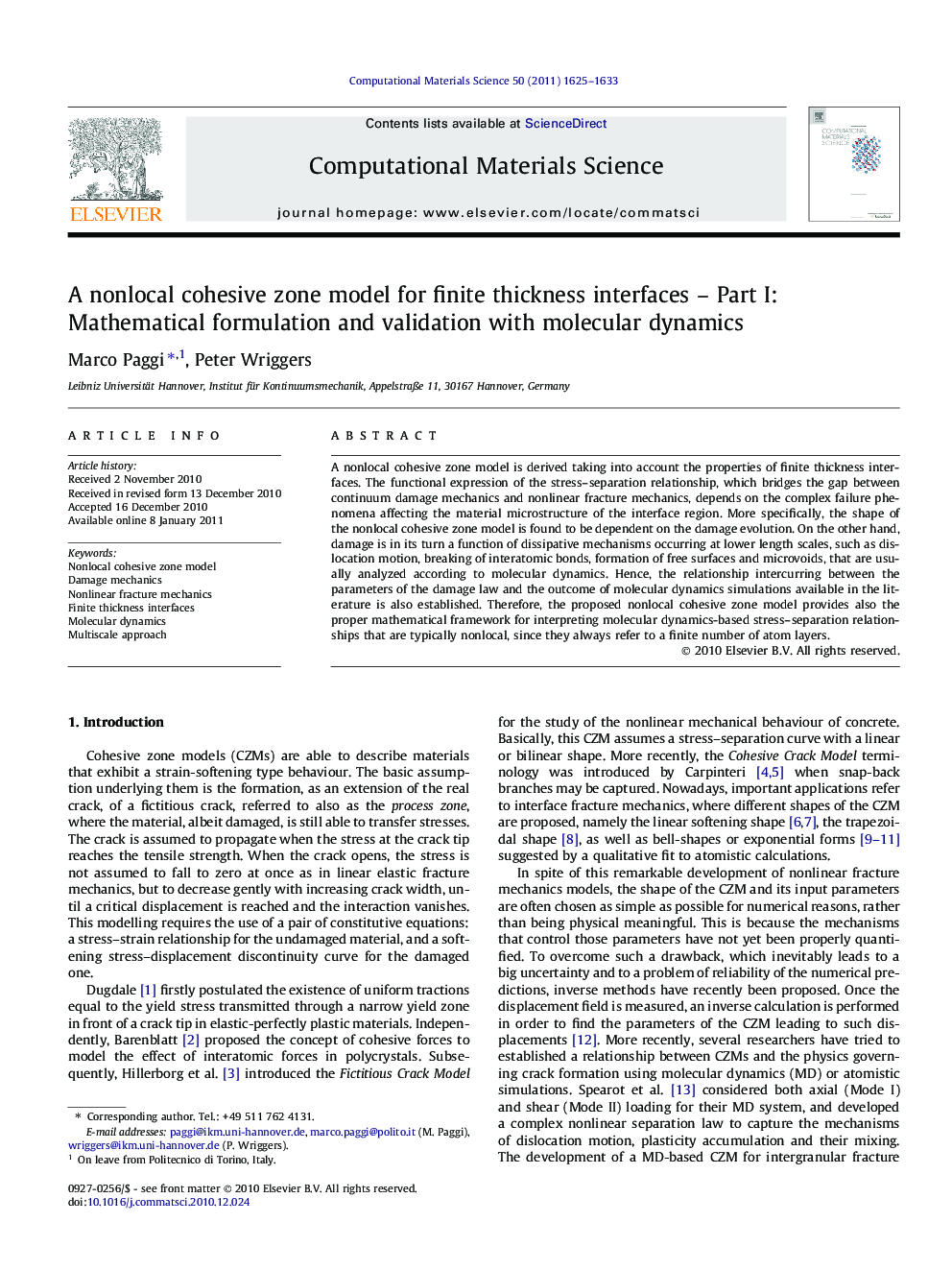| Article ID | Journal | Published Year | Pages | File Type |
|---|---|---|---|---|
| 1562327 | Computational Materials Science | 2011 | 9 Pages |
A nonlocal cohesive zone model is derived taking into account the properties of finite thickness interfaces. The functional expression of the stress–separation relationship, which bridges the gap between continuum damage mechanics and nonlinear fracture mechanics, depends on the complex failure phenomena affecting the material microstructure of the interface region. More specifically, the shape of the nonlocal cohesive zone model is found to be dependent on the damage evolution. On the other hand, damage is in its turn a function of dissipative mechanisms occurring at lower length scales, such as dislocation motion, breaking of interatomic bonds, formation of free surfaces and microvoids, that are usually analyzed according to molecular dynamics. Hence, the relationship intercurring between the parameters of the damage law and the outcome of molecular dynamics simulations available in the literature is also established. Therefore, the proposed nonlocal cohesive zone model provides also the proper mathematical framework for interpreting molecular dynamics-based stress–separation relationships that are typically nonlocal, since they always refer to a finite number of atom layers.
Research highlightsNonlocal cohesive zone model for finite thickness interfaces. The model bridges the gap between continuum damage mechanics and NLFM. Interpretation of molecular dynamics-based stress–separation relationships.
